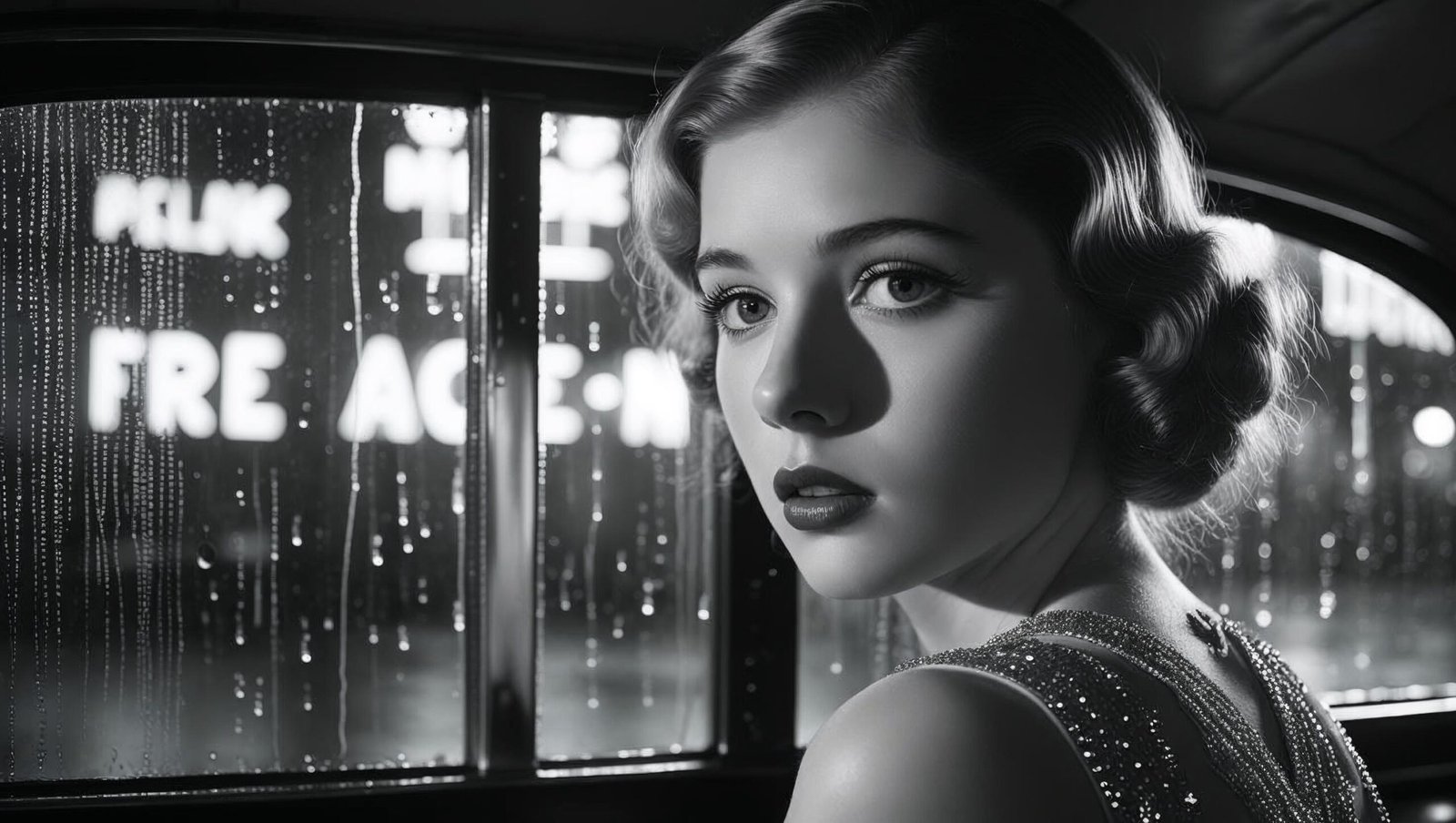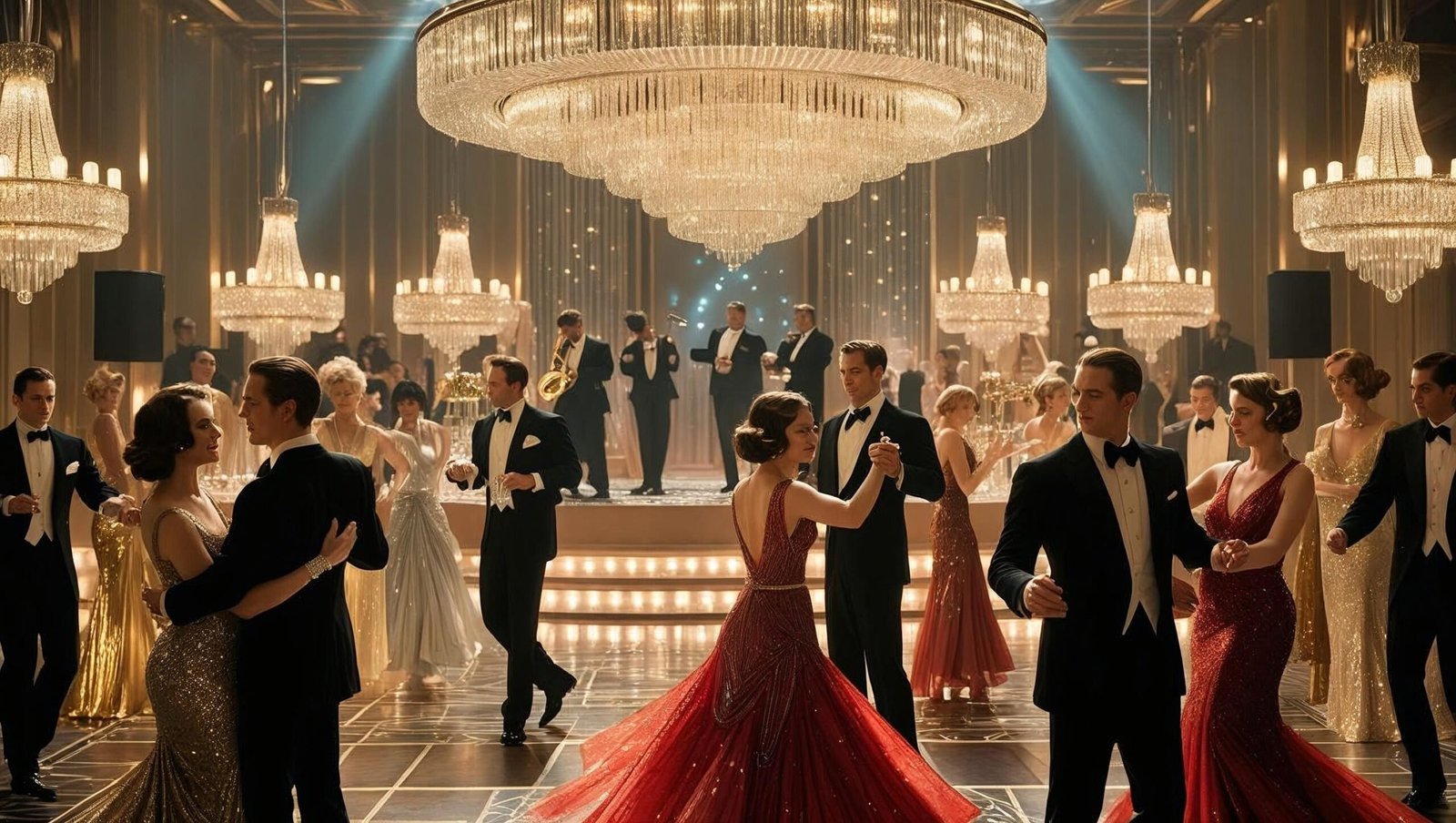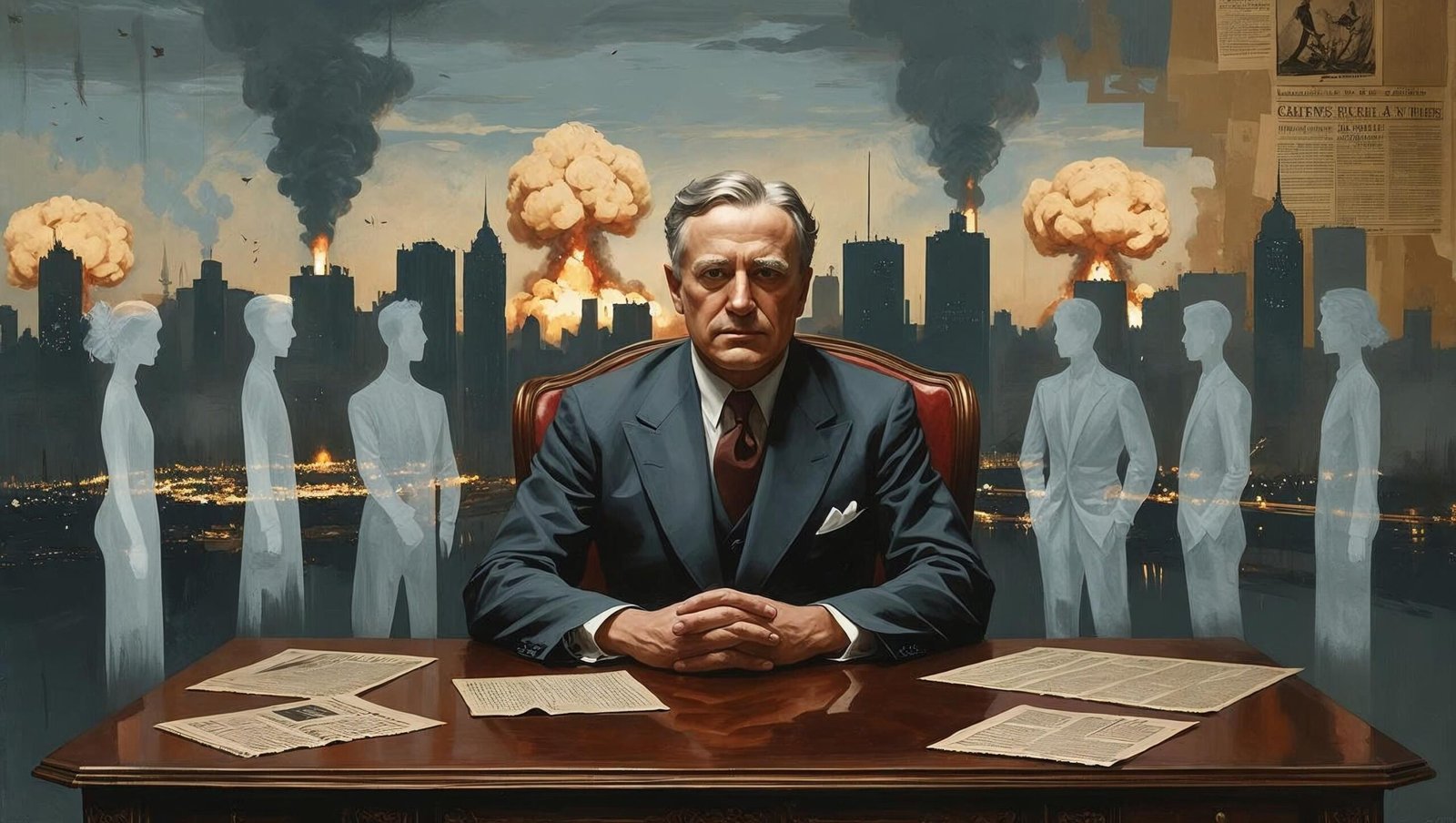Careless People by Sarah Churchwell: 7 Shocking Truths Behind Gatsby’s World
F. Scott Fitzgerald’s The Great Gatsby is a cornerstone of American literature, a dazzling tale of excess and illusion set against the backdrop of the Roaring Twenties. But what if this glittering fiction was more fact than fantasy? That’s the provocative premise of Careless People by Sarah Churchwell—a masterful blend of biography, cultural history, and literary sleuthing. In this gripping and intellectually rich book, Churchwell embarks on a fascinating journey to dissect the real lives, scandals, crimes, and headlines that may have influenced Fitzgerald’s creation of Jay Gatsby and his world.
This blog post will unravel seven shocking truths revealed in Careless People by Sarah Churchwell, analyze its literary value, and offer a critical perspective for modern readers. By the end, you’ll understand why this book is not only essential for Gatsby fans but also for those who seek the untold stories behind iconic literature.

1. The Fitzgeralds’ Turbulent Marriage: The Heart of Gatsby’s Pathos
One of the key revelations in Careless People by Sarah Churchwell is the extent to which Fitzgerald’s own troubled marriage to Zelda Sayre influenced the emotional depth of Gatsby’s story. Their passionate yet volatile relationship finds echoes in the doomed love between Gatsby and Daisy.
Churchwell provides intimate glimpses into the Fitzgeralds’ life in 1922, the pivotal year when The Great Gatsby was conceived. The couple lived a glamorous but unstable life, marred by alcohol abuse, jealousy, and emotional turmoil. This biographical parallel adds a haunting dimension to Gatsby’s desperate longing for an idealized love that never truly existed.
2. True Crime and the Murder That Shook America
Perhaps the most arresting narrative strand in Careless People by Sarah Churchwell is the account of the Hall-Mills murder case—a real-life double homicide that dominated headlines in the early 1920s. A priest and a choir singer were found murdered in New Jersey in a case laced with scandal, forbidden love, and media frenzy.
Churchwell suggests that Fitzgerald, a voracious reader of newspapers and fascinated by crime, may have absorbed this case and woven its themes into Gatsby’s underworld of bootlegging, deceit, and betrayal. Careless People by Sarah Churchwell skillfully connects this crime to the moral rot at the heart of Gatsby’s America.
3. The American Dream Under Scrutiny
More than anything else, Careless People by Sarah Churchwell interrogates the concept of the American Dream. Fitzgerald’s novel is often cited as a critique of materialism and the hollowness of upward mobility. Churchwell, however, pushes this critique further by linking the novel to the socio-political realities of 1922—Prohibition, racial tensions, class divides, and post-war disillusionment.
She argues that Gatsby’s rise and fall weren’t just symbolic but rooted in the lived experience of a nation grappling with its identity. This makes Careless People by Sarah Churchwell both a cultural analysis and a moral inquiry into how dreams can become dangerous illusions.
4. Prohibition and the Culture of Hypocrisy
The Roaring Twenties are often romanticized for their speakeasies, jazz, and glitter. But Careless People by Sarah Churchwell exposes the darker underbelly of this era: the widespread corruption fueled by Prohibition. Churchwell meticulously charts how the illegal liquor trade shaped the landscape that Fitzgerald captured so brilliantly.
She highlights how figures like Gatsby—ostensibly self-made—were part of a system riddled with dishonesty and moral decay. The book shows how The Great Gatsby was not merely a novel of longing and heartbreak, but also a sharp indictment of societal hypocrisy. Careless People by Sarah Churchwell makes this critique vivid and unforgettable.

5. Media Sensationalism and the Rise of Celebrity Culture
One of the book’s most prescient insights is how the 1920s witnessed the birth of celebrity journalism. Careless People by Sarah Churchwell draws a fascinating line between Gatsby’s world and the rise of gossip columns, tabloid reporting, and scandal as entertainment.
Just as Gatsby constructs his image through myth and rumor, so too did the real figures of the time. Churchwell explores how Fitzgerald may have been both a consumer and a critic of this media circus, offering a lens through which we can view today’s obsession with fame. This makes Careless People by Sarah Churchwell astonishingly relevant in the digital age.
6. Daisy Buchanan: A Reflection of America’s Lost Morality
Daisy Buchanan remains one of the most enigmatic characters in American fiction—beautiful, desirable, and morally elusive. Careless People by Sarah Churchwell delves deep into Daisy’s literary roots, suggesting that she was inspired by real women of Fitzgerald’s time—socialites who embodied charm, privilege, and an unsettling detachment.
Churchwell challenges readers to reconsider Daisy not just as Gatsby’s muse, but as a symbol of a nation seduced by surfaces and indifferent to consequences. In this light, Careless People by Sarah Churchwell becomes a feminist re-reading of Gatsby and an indictment of the gender dynamics of the 1920s.
7. Fitzgerald’s Self-Destruction and Legacy
Finally, Careless People by Sarah Churchwell sheds light on Fitzgerald’s own self-destructive tendencies. His struggle with alcoholism, his inability to manage money, and his growing sense of failure mirrored Gatsby’s tragic arc. The man who chronicled the downfall of the American Dream was himself falling apart.
Yet, Churchwell treats Fitzgerald with both critique and compassion. She portrays him as a writer torn between idealism and cynicism, clarity and confusion. Through this portrait, Careless People by Sarah Churchwell elevates itself from literary analysis to psychological exploration.
The Broader Literary and Historical Canvas
While the primary focus of Careless People by Sarah Churchwell remains rooted in the year 1922 and its potential influence on The Great Gatsby, it is equally important to recognize the sweeping literary and historical landscape within which this exploration takes place. The early 20th century was a time of profound change—not just in America but globally. This was a post-war world, scarred by the trauma of World War I, grappling with rapid urbanization, technological disruption, and a seismic shift in social norms.
In many ways, the 1920s represented a moment when the future collided with tradition. There was a palpable anxiety in the air—about modernity, about morality, about what it meant to be an individual in an increasingly fragmented and mechanized society. Fitzgerald, like many of his contemporaries, including Ernest Hemingway, Gertrude Stein, and T.S. Eliot, was attempting to give voice to this confusion and contradiction.
Churchwell’s work, when examined through this wider lens, can be appreciated not merely as a textual supplement to Fitzgerald’s novel, but as a cultural excavation that helps us situate American literature in the midst of seismic global changes. The Gatsby mythos is no longer confined to the Long Island mansions or the blinking green light at the end of Daisy’s dock—it stretches across oceans, wars, and ideologies.

The Role of Economic Boom and Technological Modernity
No examination of the 1920s can ignore the unbridled economic optimism that defined the era. The stock market was soaring, automobiles were replacing horses, radios were transforming communication, and for the first time, consumer credit allowed people to live beyond their means. All of this contributed to the illusion of prosperity and permanence.
This illusion is at the heart of Gatsby’s downfall. While his mansion, parties, and lifestyle represent the pinnacle of success, they are founded on an unstable economic and moral foundation. Churchwell’s analysis underscores how these material symbols were echoed in real life. The characters who populate Gatsby’s world were not merely fictional inventions—they were composites of real individuals living lives of extravagance while skating on the edge of financial ruin.
Indeed, the eventual crash of 1929, just four years after The Great Gatsby was published, retroactively cast the novel in an almost prophetic light. Churchwell’s insights force us to ask: Were Fitzgerald and his characters already mourning a world that was about to collapse?
Gender Roles and the Rise of the Flapper
Another undercurrent explored with remarkable subtlety is the transformation of gender roles during the Jazz Age. The 1920s witnessed the emergence of the “New Woman”—independent, sexually liberated, socially visible, and economically ambitious. These women smoked in public, danced to jazz, drove cars, and worked in offices.
Daisy Buchanan, for all her tragic inertia, represents a part of this cultural shift. She is not a passive Victorian figure but a woman shaped by conflicting messages of freedom and conformity. She’s both alluring and alienating—free yet trapped. Jordan Baker, with her athletic prowess and aloof demeanor, further complicates traditional notions of femininity.
Churchwell’s work compels us to view these characters as more than literary foils. They are reflections of a society caught between repression and revolution. In this context, The Great Gatsby becomes a commentary not just on dreams and decadence, but also on the evolving role of women and the crisis of masculinity that often followed in its wake.
Moral Disintegration and the Loss of Meaning
Perhaps the most haunting theme that runs through both The Great Gatsby and Churchwell’s commentary is the sense of moral disintegration. This is not a novel of clear villains and heroes; it is a murky tale of flawed characters operating in a morally ambiguous world. Tom Buchanan is abusive and racist. Daisy is careless and cruel. Gatsby is a romantic idealist built on criminal foundations.
Churchwell’s analysis brings to light the way this moral ambiguity mirrored the wider disillusionment of the post-war generation. The horrors of World War I shattered many people’s belief in progress, justice, and divine purpose. In its place emerged a modernity that celebrated speed, wealth, and spectacle.
This void—this aching absence of meaning—is what gives the novel its enduring power. And it is what makes Churchwell’s work resonate with readers today. We, too, live in a time of spectacle, of curated personas, of deep disillusionment with institutions and narratives. In exploring the past, Churchwell indirectly holds up a mirror to the present.
The Literary Detective: Churchwell’s Method
One of the most compelling aspects of the book is Churchwell’s methodology. She approaches her subject with the tenacity of a detective and the sensitivity of a literary critic. Every newspaper article, every photograph, every obscure diary entry becomes a clue in her intricate investigation.
Her approach is interdisciplinary. She is not confined to literary theory but draws freely from history, sociology, journalism, and biography. This makes the book a model for contemporary literary scholarship—rigorous yet readable, analytical yet engaging.
Moreover, Churchwell resists the temptation to impose a single narrative or theory. She acknowledges contradictions, embraces ambiguity, and invites readers to draw their own conclusions. This intellectual honesty is perhaps one of the book’s greatest virtues.

Implications for Contemporary Readers
What does it mean to read Fitzgerald today, in an age defined by social media, global instability, climate anxiety, and unprecedented inequality? What does Gatsby’s pursuit of the green light mean when filtered through the lens of the 21st century?
Churchwell’s book does not offer facile answers. Instead, it equips readers with the tools to ask better questions. It encourages us to scrutinize our own myths—the myth of progress, the myth of meritocracy, the myth of success.
In this sense, the book is not just about the 1920s. It is about the narratives we live by and the costs of believing in beautiful illusions. In drawing parallels between then and now, the book becomes both a cultural artifact and a call to consciousness.
Critical Reception and Legacy
Since its publication, the book has received widespread acclaim. Critics have praised Churchwell’s erudition, her prose style, and the depth of her research. It has been featured in prominent literary journals, mainstream media, and university syllabi.
But more importantly, it has sparked a renewed interest in The Great Gatsby and the world from which it sprang. Book clubs, scholars, and casual readers alike have found in its pages a rich tapestry of insight and provocation.
In this regard, Churchwell has not merely written a commentary—she has opened a dialogue. A dialogue between past and present, fiction and fact, dream and disillusionment.
Final Reflection
To read this book is to engage in an act of deep listening—to the voices of the past, to the silences in the text, and to the echoes that still shape our world today. It is a work that rewards close attention and invites multiple readings.
As we navigate our own turbulent times, filled with both promise and peril, the book offers a timely reminder: history is never really past. It lingers in our literature, in our language, and in our longing. The dream persists, but so does the danger.
The enduring relevance of this exploration lies in its ability to force us to confront uncomfortable truths while holding space for beauty, aspiration, and critical hope. It is this blend of realism and reverence that gives the work its unique and lasting power.
Why Careless People by Sarah Churchwell Is a Must-Read
Churchwell’s book is not just an accompaniment to The Great Gatsby; it’s a revelation. With its elegant prose, scholarly rigor, and narrative drive, Careless People by Sarah Churchwell reinvigorates our understanding of Fitzgerald’s masterpiece.
More importantly, it reminds us that literature doesn’t emerge in a vacuum. Every great novel has roots—in life, in history, in the unspoken truths of its time. This is what makes Careless People by Sarah Churchwell a triumph: it uncovers the invisible threads that connect fiction to reality.

FAQs
Q1: Do I need to read The Great Gatsby before reading Careless People by Sarah Churchwell?
While it’s not mandatory, reading The Great Gatsby first will greatly enhance your appreciation of Careless People by Sarah Churchwell. The book offers deep intertextual insights that rely on familiarity with Fitzgerald’s novel.
Q2: Is this book more of a biography or literary criticism?
Careless People by Sarah Churchwell is a hybrid—it combines elements of biography, history, literary criticism, and cultural commentary. It’s scholarly but readable, making it suitable for both casual readers and academics.
Q3: What makes Careless People by Sarah Churchwell different from other books about Fitzgerald?
Unlike traditional biographies, Churchwell zooms in on a single year—1922—to provide an intense, focused lens. This allows her to explore the intersection of real-life events and literary imagination with unmatched depth.
Q4: Can this book be used for academic research or coursework?
Absolutely. Careless People by Sarah Churchwell is well-cited and meticulously researched. It offers valuable historical context and literary analysis that students and researchers will find highly useful.
Q5: Is this book emotionally engaging or strictly analytical?
Both. Churchwell’s narrative is filled with intellectual rigor, but she also writes with empathy, emotion, and storytelling flair. Careless People by Sarah Churchwell is as moving as it is enlightening.
Conclusion: A Dazzling Lens on a Decadent Age
In a world increasingly obsessed with surface over substance, Careless People by Sarah Churchwell arrives as both a revelation and a warning. It dares to strip away the myth of the Jazz Age, exposing the contradictions, the chaos, and the carelessness that defined an entire generation.
For readers of The Great Gatsby, this book is nothing short of essential. For those interested in history, media, crime, or the American Dream, it is a compelling investigation into a time that mirrors our own.
Sarah Churchwell doesn’t just tell us who Gatsby might have been—she shows us why he still matters. That’s the enduring power of Careless People by Sarah Churchwell, and it’s why this book deserves a place on every serious reader’s shelf.
Read more powerful book reviews at:
👉 shubhanshuinsights.com